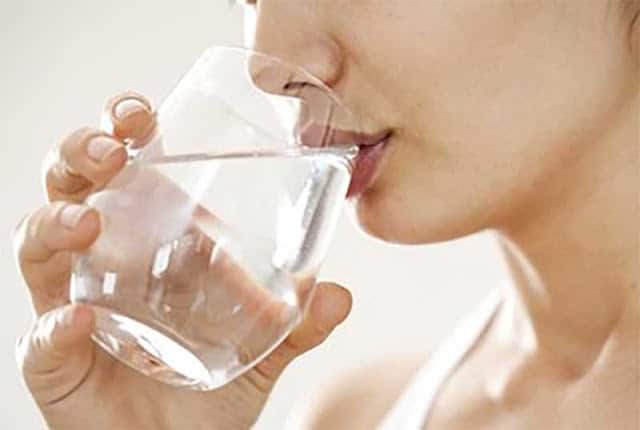Whether it’s from overindulging at a party or mindlessly eating a bag of chips while watching a new show, nothing is more uncomfortable than not being able to button your pants from water bloat.
Excess sodium is usually the culprit. Holding onto too much sodium not only causes fluid retention but may also increase blood pressure. To restore balance, and feel more comfortable in your pants, flush sodium out of your system by upping your water intake and eating high-potassium foods.
Drink Your Water
Your kidneys are responsible for getting rid of sodium in your urine. Drinking more water increases urine production and helps flush out excess sodium. On average, adults need 8 to 12 cups of water a day to replace normal losses, which means you may need to drink more to get rid of the extra sodium in your system. To stay on target, fill a 64- to 96-ounce container with water to drink throughout the day to make sure you get what you need to flush the sodium.
Eat Water-Rich Foods
Drinking more than 12 cups of water in a day may be difficult. To supplement water intake and help decrease sodium in your body, you’ll also want to include foods with high water content. Fruits and vegetables — such as strawberries, oranges, apples, lettuce, cucumbers, and peppers — make good choices. Also, oatmeal made with water, yogurt, fruit smoothies, and low-sodium soups can up your fluid intake to assist in flushing sodium.
Benefits of High-Potassium Foods
In addition to water, you can also flush sodium by adding more potassium to your diet. Potassium and sodium work together to maintain fluid balance, and when potassium intake is high, it helps your body excrete more sodium.
Foods high in potassium include bananas, potatoes, oranges, tomatoes, strawberries, avocados, and beans. If your kidney function is compromised, you may need to be careful about eating too many high-potassium foods and should discuss it with your doctor first.
Health Consequences of Too Much Sodium
Making a few changes to your diet can help get rid of excess sodium in a pinch, but if your diet is chronically high in sodium, you’ll have more problems than buttoning up your pants. A high-sodium diet is linked to high blood pressure and an increased risk of stroke and heart attack. To cut back on sodium in your diet, limit your intake of processed foods, like fast food and chips, and instead eat fresh foods such as fruits, vegetables, whole grains and meats prepared without added sodium.
Important Notice: This article was originally published at healthyeating.sfgate.com by Jill Corleone where all credits are due.









